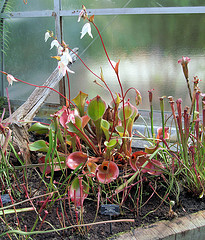Endemic Species and Biodiversity Hotspots
According to the US Fish and Wildlife Service, endemic species are native species that are confined to a certain region or having a comparatively restricted distribution. For example, the Joshua Tree is endemic to the Mojave Desert. In other words, endemics, wherever they are located, are unique to their region. In general, the greater the isolation or specialized nature of the habitat, the more numerous the endemics. Thus, according to Britannica Encyclopedia online, species on remote oceanic islands tend to be almost 100% endemic.
Why Endemics are Important
Endemic spec ies are important for a number of reasons. First, since endemic species have a generally restricted distribution, threats to endemics carry more risk of extinction than for broadly distributed species.
ies are important for a number of reasons. First, since endemic species have a generally restricted distribution, threats to endemics carry more risk of extinction than for broadly distributed species.
Second, according to the book Climate Change and Biodiversity, edited by Thomas E. Lovejoy and Lee Hannah, when an endemic plant species becomes extinct, it takes with it between 10 and 30 endemic animal species.
Third, endemics, by definition, are highly adapted to their home range. As conditions within their range change, whether from anthropogenic or natural causes, their adaptations can function as a source of competitive strength or weakness. In other words, some endemics of distinct regions may function as a sort of “collective insurance” for continued genetic diversity in the face of rapid changes, while others are at greatest risk of extinction as conditions change.
Thus, endemic species are a focus for the conservation of biological diversity, or biodiversity. According to a seminal paper in Nature by Norman Myers et al., “biodiversity hotspots' where exceptional concentrations of endemic species are undergoing exceptional loss of habitat” could constitute a kind of “silver bullet” for biodiversity conservation (24 February, 2000. Vol. 403).
US Endemism and Biodiversity Hotspots
To qualify as a biodiversity “hot spot” a region must have both a high proportion of endemic species and have lost a significant amount of its habitat or populations. There are 34 hotspots worldwide where 75% of the planet’s most threatened mammals, birds, and amphibians survive within habitat covering just 2.3% of the Earth’s surface (roughly equivalent to the combined areas of the five largest US states).
In terms of biodiversity in the U.S., California and Texas both have by far the highest number of species, and parts of California are considered a global hotspot.
Tracking Biodiversity and Endemic Species
In 1974, The Nature Conservancy helped establish the first state natural heritage program and over the next two decades, with the help of many public and private partners, built a network of programs that collects and manages data about the status and distribution of species and ecosystems of conservation concern. NatureServe is the organization that consolidates this data and makes it available on the internet. All 50 state Natural Heritage Programs plus Conservation Data Centers provide data collected from throughout the United States, Canada, Latin America and the Caribbean.
Natural heritage programs are the leading source of information on the precise locations and conditions of at-risk species and threatened ecosystems. Consistent standards for collecting and managing data allow information from different programs to be shared and combined regionally, nationally, and internationally. The NatureServe network represents more than 800 dedicated scientists with a collective annual budget of almost $50 million.
Endemics are the "Locals"
No matter your state or region, if you have endemics in your area, you can count on the fact that they are the original "locals." Endemic species, particularly charismatic species, can be a source of pride for local communities and school children. They are also an important factor to consider in private land stewardship.